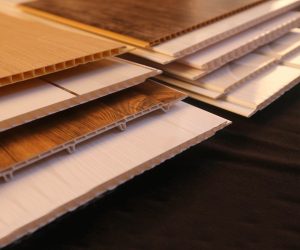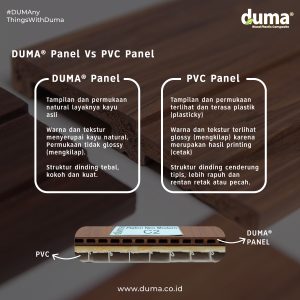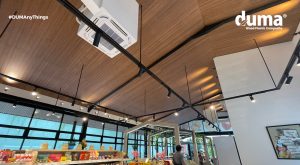DUMA® WPC Panels vs. PVC Panels: What’s the Difference?
The advancement of modern technology has also impacted building materials, one example being the rising popularity of Wood Plastic Composite (WPC) and Polyvinyl Chloride (PVC) products
WPC is the primary material used in the production of all DUMA® products. It is environmentally friendly and ideal as a substitute for natural wood or plywood in building materials.
The large-scale exploitation and deforestation of forests also cause environmental damage that contributes to global warming. Replace your need for natural wood materials in building decoration with DUMA® WPC.
Meanwhile, PVC or polyvinyl chloride is one of the most commonly used types of plastic in the world. Known for its versatility, PVC is utilized across a wide range of industries—from packaging and clothing to healthcare and construction. In the building industry, PVC is often used for water pipes, hoses, roofing, window frames, and decorative elements such as ceiling panels.
So, what’s the difference between DUMA® WPC Panels and PVC Panels as materials for wall and ceiling cladding?
DUMA® WPC:
-
A natural look and surface, just like real wood
-
Color and texture resemble natural wood; the surface is not glossy
-
Thick, solid, and strong wall structure
PVC Panel:
-
The appearance and surface look and feel plasticky
-
Color and texture appear glossy due to the printed finish
-
Wall structure tends to be thin, more fragile, and prone to cracking or breaking
#DUMAnyThings #duma #wpc #woodplasticcomposite #dumawpc #plafon #plafonwpc #plafonkayu #plafonantirayap #arsitekjakarta #arsiteksurabaya
#interiorjakarta #interiorsurabaya #kontraktorjakarta #kontraktorsurabaya #antirayap #pintu #dindingwpc #pintuwpc #lantai #lantaiwpc




